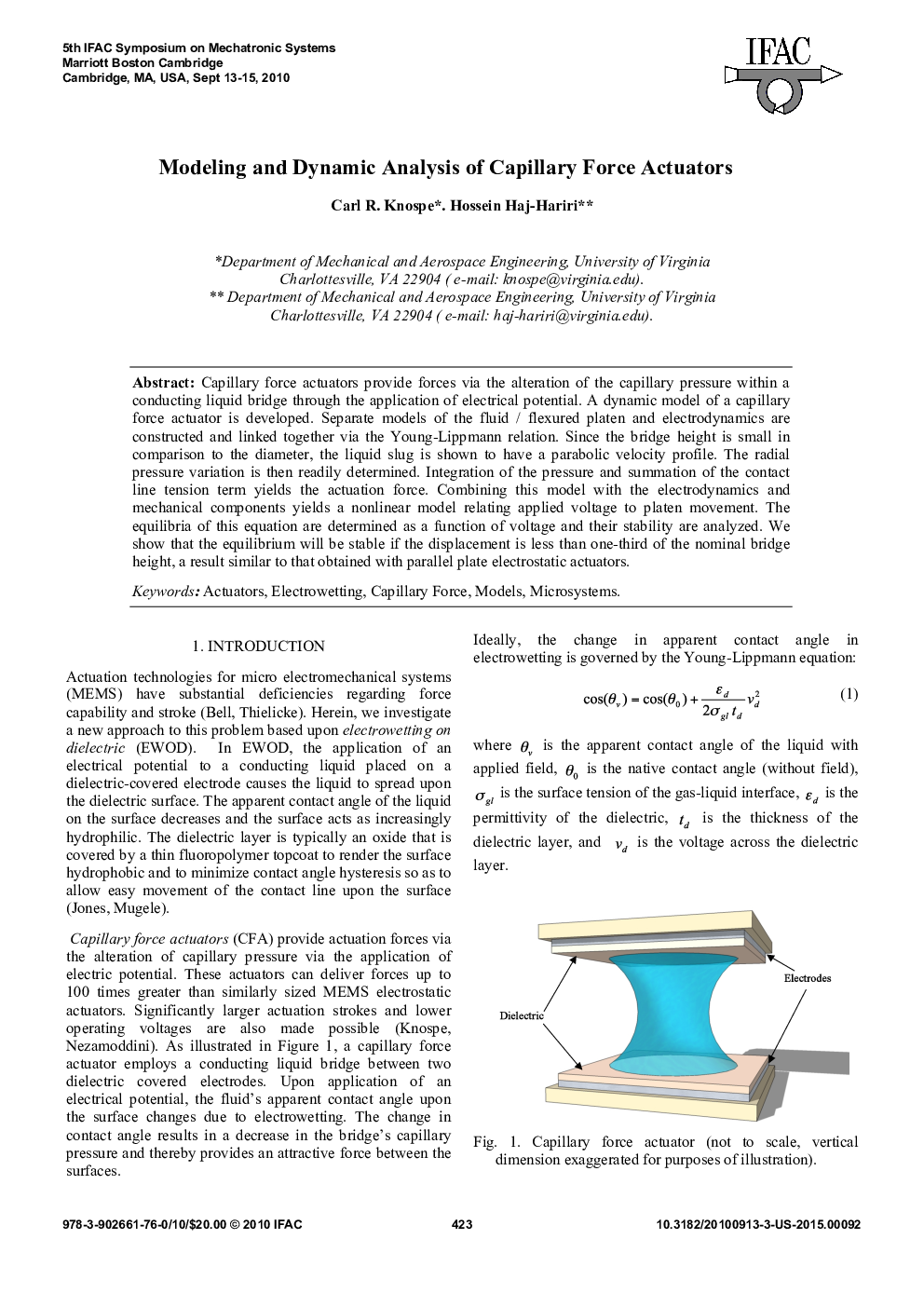| Article ID | Journal | Published Year | Pages | File Type |
|---|---|---|---|---|
| 715910 | IFAC Proceedings Volumes | 2010 | 6 Pages |
Capillary force actuators provide forces via the alteration of the capillary pressure within a conducting liquid bridge through the application of electrical potential. A dynamic model of a capillary force actuator is developed. Separate models of the fluid / flexured platen and electrodynamics are constructed and linked together via the Young-Lippmann relation. Since the bridge height is small in comparison to the diameter, the liquid slug is shown to have a parabolic velocity profile. The radial pressure variation is then readily determined. Integration of the pressure and summation of the contact line tension term yields the actuation force. Combining this model with the electrodynamics and mechanical components yields a nonlinear model relating applied voltage to platen movement. The equilibria of this equation are determined as a function of voltage and their stability are analyzed. We show that the equilibrium will be stable if the displacement is less than one-third of the nominal bridge height, a result similar to that obtained with parallel plate electrostatic actuators.
